A Cosmic Cloud Bigger Than The Entire Milky Way
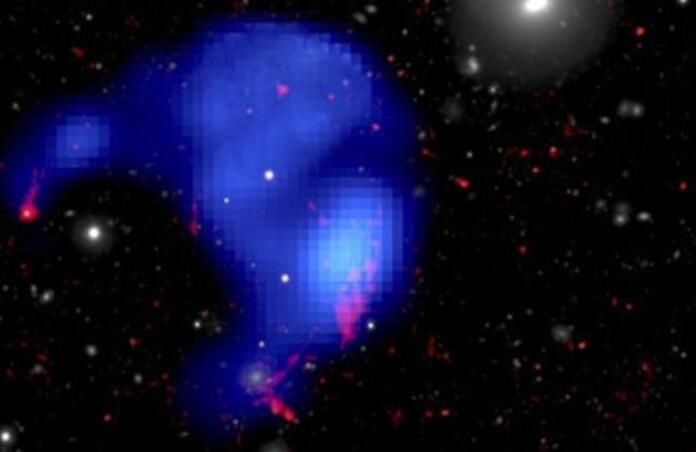
A previously unknown phenomena has been observed in the Intracluster Medium (ICM), the space between galaxies in a cluster: a solitary cloud of warm gas.
The ICM is a complex and hot environment that contains roughly 10% of a cluster's mass, but a majority of the matter – this is because dark matter, that makes up most of the mass, is concentrated around the galaxies. The density is extremely low, much lower than in the interstellar medium, but because the particles of the ICM don’t have many others to interact with, it means that they won’t lose their energies – they typically have to travel for one light-year before meeting a “partner” – hence the hot gas, or plasma, stays at the extreme temperature of about 100 million Kelvin. Inside a galaxy, warm gas is found at temperatures ranging from 10,000 to 10,000,000 Kelvin.
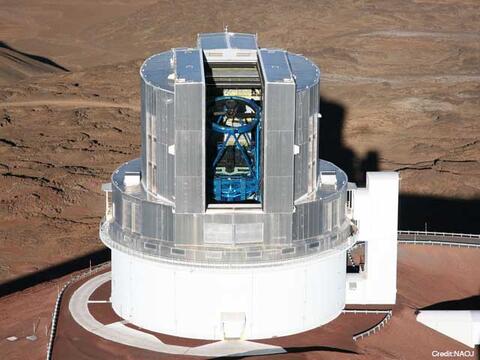
Subaru Telescope 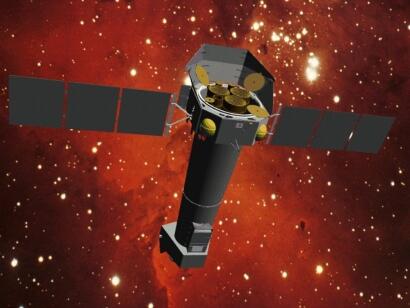
One of the first artist impressions of XMM Newton 
MUSE on the VLT
It is within this intriguing medium that a warm clump of gas, an orphan cloud, was initially detected in 2017 with the Subaru Telescope at Mauna Kea, Hawaii, but its nature couldn’t be established. A team led by Chong Ge combined the Subaru observations with data from ESA’s X-ray XMM Newton space telescope and the Multi Unit Spectroscopic Explorer (MUSE) at the Very Large Telescope (VLT) of the European Southern Observatory (ESO) – the latter instrument weighs 8 metric tons and is mounted on one of the four “components” of the VLT, the Yepun telescope which like its colleagues Antu, Kueyen and Melipal has a primary mirror, or light-gathering surface, of 8.2 meters.
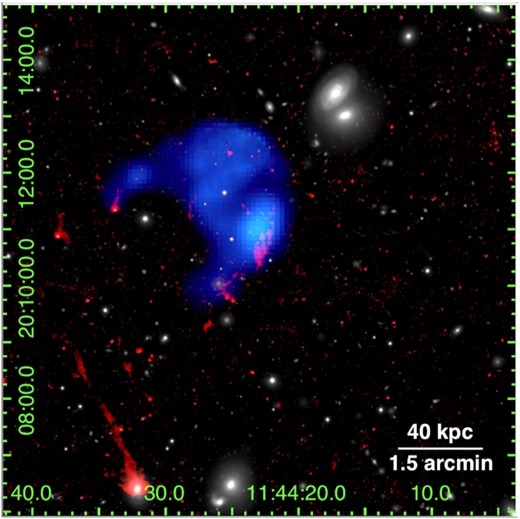
What was originally detected is the red clump at the bottom (southeast lobe) of the cloud
Taken together, the images show a very unexpected object: the X-ray emissions reveal that the cloud is actually larger than the Milky Way, with an estimated mass of over 10 billion Suns. The best theory to explain its formation is that the gas was stripped of a galaxy; however, there is no galaxy near to the orphan cloud, but one would expect the gas to diffuse into the ICM after a few million years. This forced the team to consider hypotheses as to what process might hold together a cloud of gas detached from its galaxy, and the most plausible one is that the clump is held together by magnetic forces which stabilize it against turbulences of the ICM.
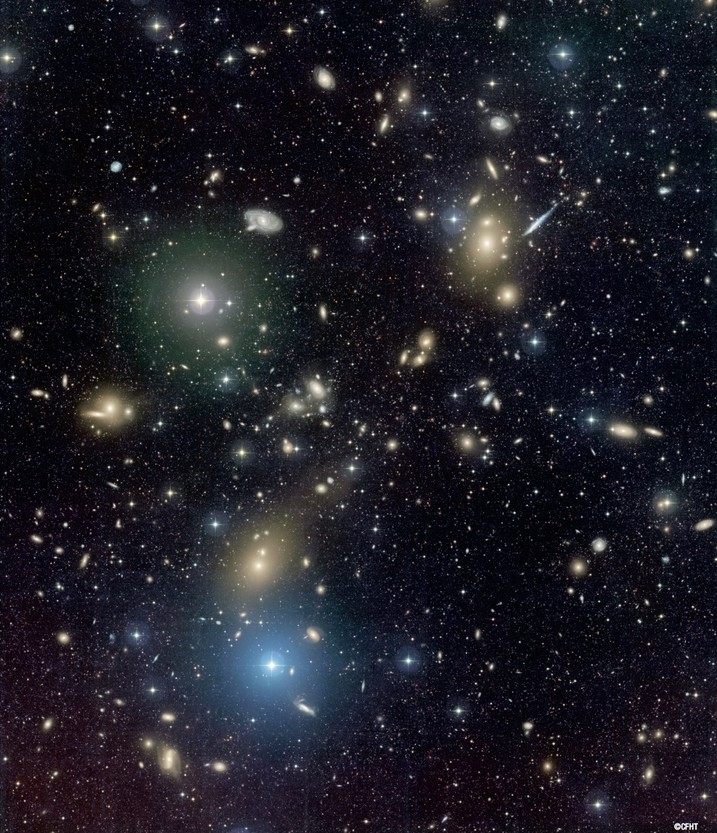
The Abell 1367 cluster, more commonly known as the Leo Cluster, contains around 70 galaxies and is located around 300 million light-years away from Earth. To find the orphan cloud’s parent galaxy, the first constraint is mass: the incredible size of the fragment stripped away to form the cloud suggests that the parent galaxy is also very large. The shape of the object can indicate the location of the parent, too, by pointing at it with traces of the gas that extend beyond the main cloud. Understanding heat conduction and turbulence is a key to model the processes involved in displacing the cloud over such distances, which could further help locate the galaxy.
This one-of-a-kind finding paves the way for many more studies of the ICM, and certainly ESA has announced in their publication of the discovery that upcoming warm gas surveys will be “targeted to search for other orphan clouds”.
Cover Image: Orphan Cloud, ESA/XMM-Newton/Ge et al
Image Credits:
1 - Subaru Telescope, NAOJ
2 - XMM Newton, ESA
3 - MUSE at the VLT, ESO
4 - Orphan Cloud, Figure 1 from Ge et al
5 - Abell 1367, Canada-France-Hawaii Telescope/Coelum
